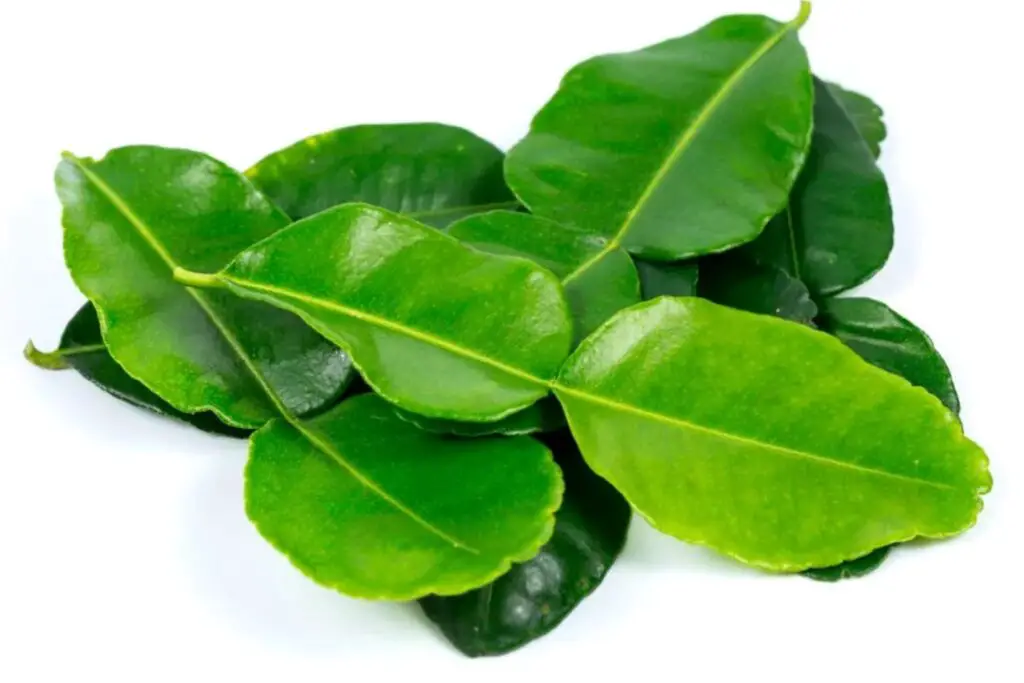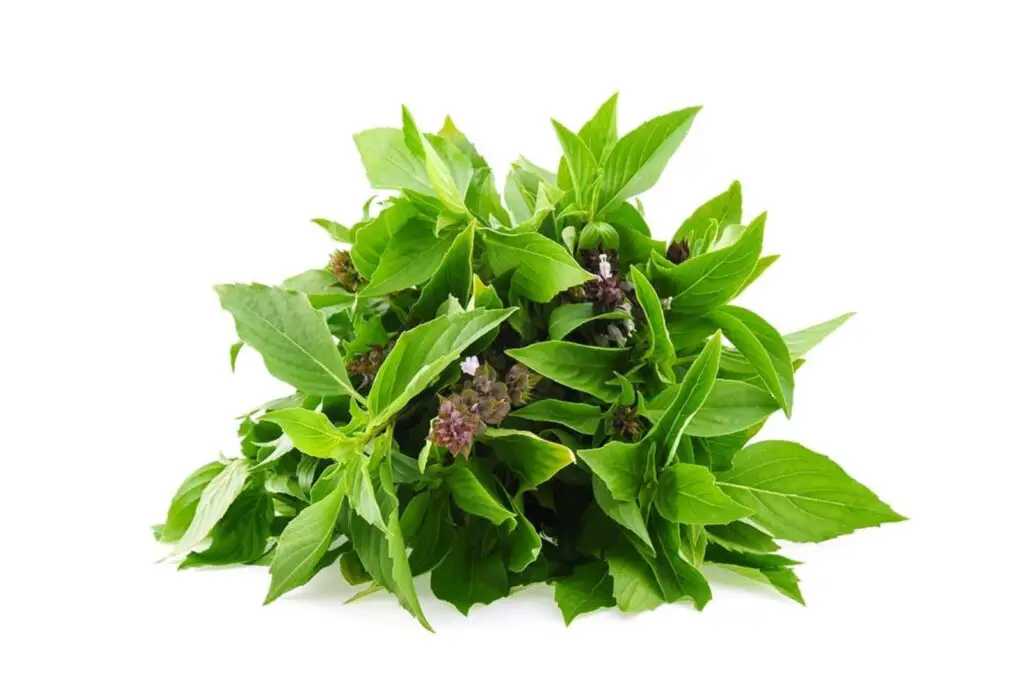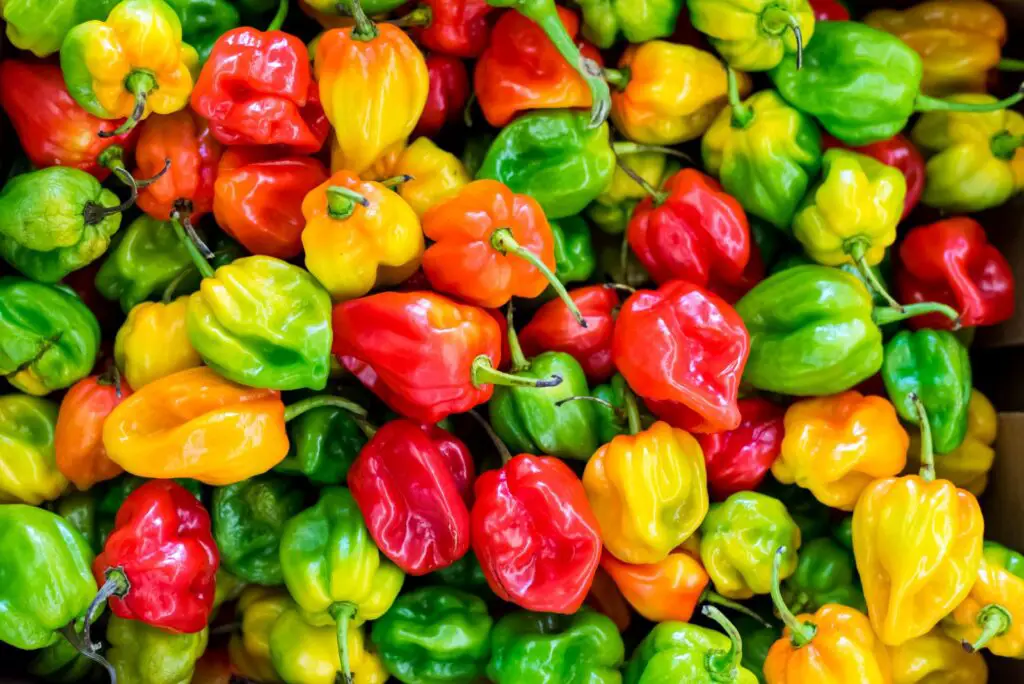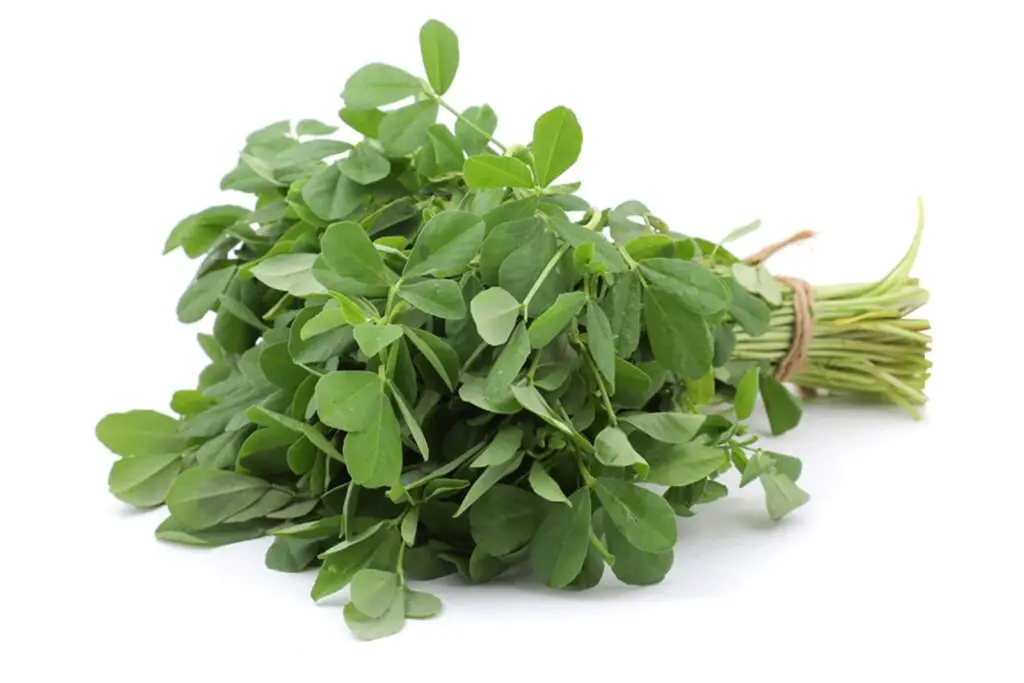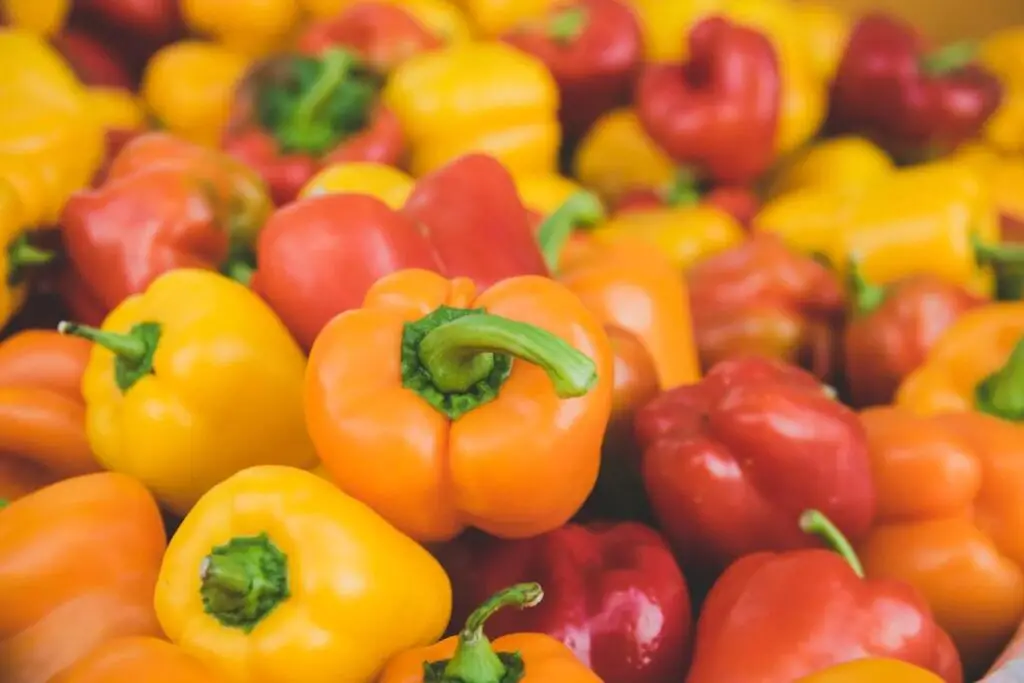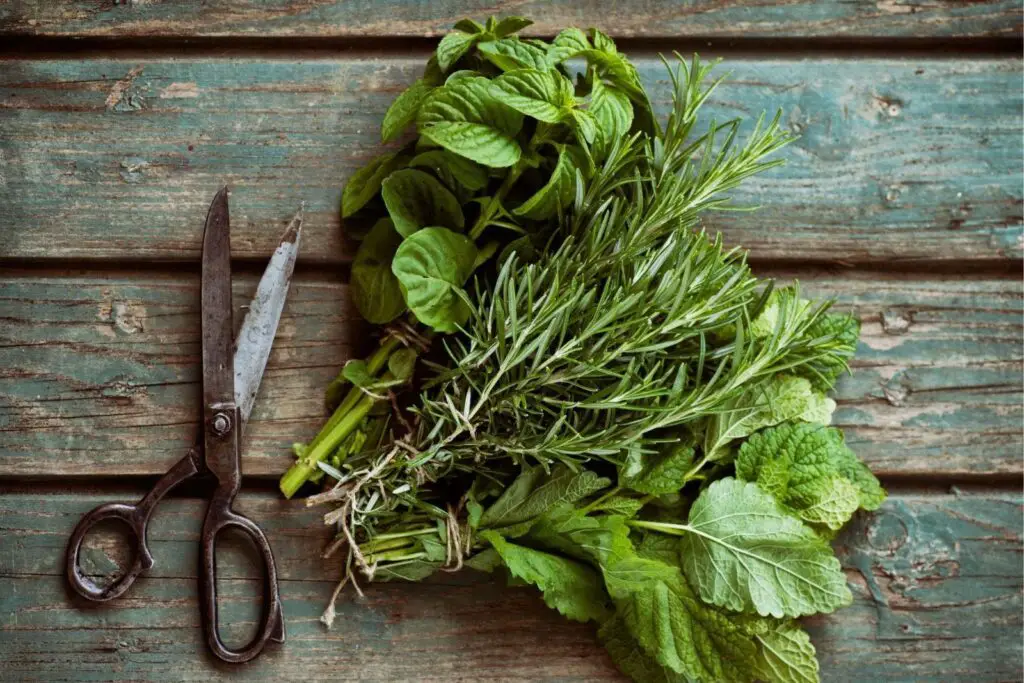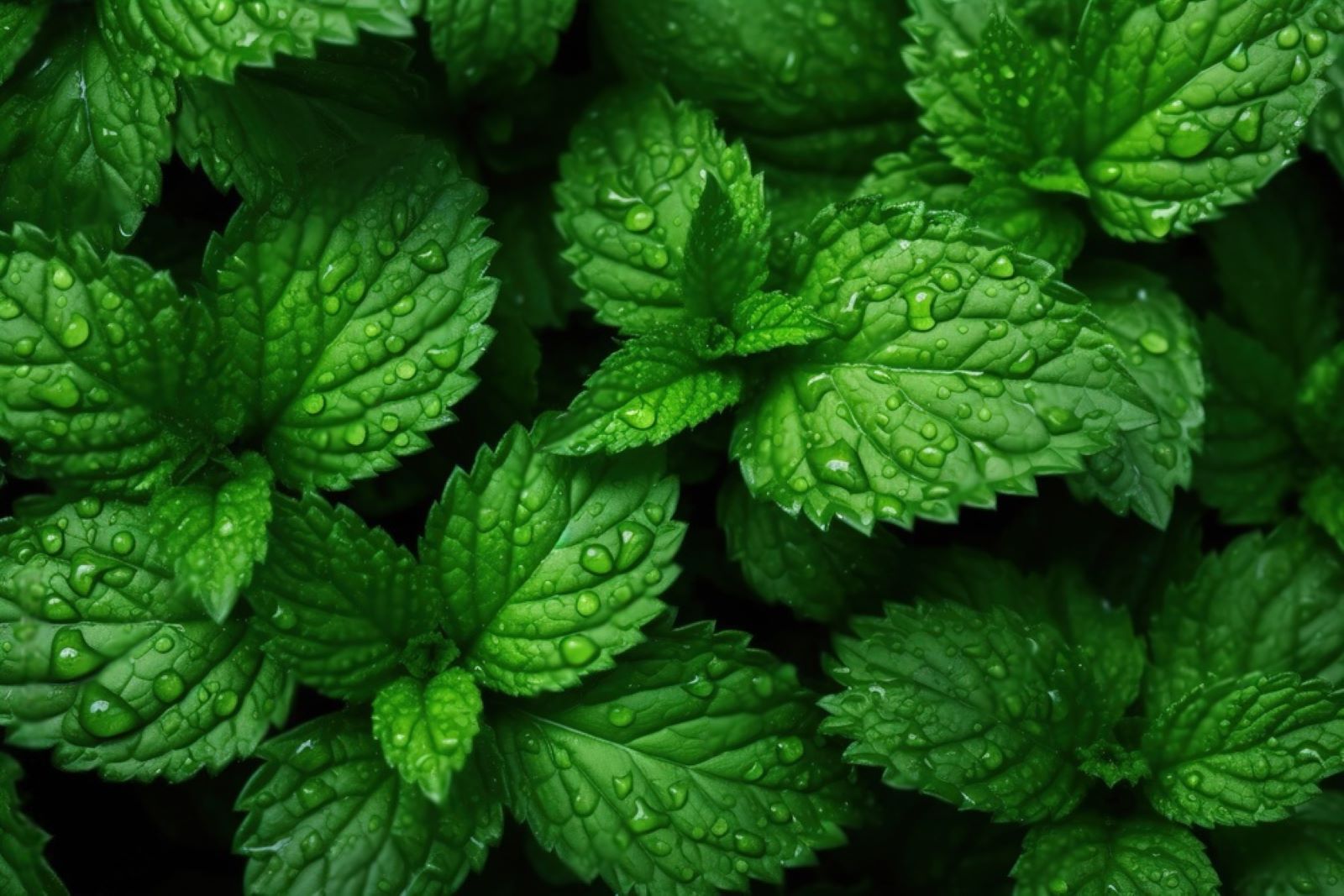
Peppermint leaves, with their invigorating aroma and refreshing taste, stand as a beloved herb that has been cherished for its culinary, medicinal, and aromatic qualities for centuries. These vibrant green leaves carry a distinct and cooling flavor that can elevate a variety of dishes and beverages. From adding a zing to desserts and teas to incorporating a hint of freshness into savory dishes, peppermint leaves offer a versatile touch to culinary creations. Beyond their culinary appeal, these leaves are also celebrated for their potential health benefits, often used for their soothing properties and potential to alleviate digestive discomfort. However, when cultivating peppermint or obtaining it in abundance, it might be challenging to utilize all the leaves before they start to lose their vibrant color and potent aroma.
Freezing peppermint leaves emerges as a practical and efficient method to preserve their delightful taste and aromatic charm, ensuring that each leaf retains its invigorating essence and culinary potential, ready to elevate your dishes and infuse your beverages with the essence of perfectly frozen peppermint leaves, even when fresh leaves aren’t readily available or when you desire a dash of coolness at your convenience. In this guide, we will explore the best practices for freezing peppermint leaves, enabling you to savor the richness of these versatile leaves and elevate your culinary experiences with the essence of perfectly frozen peppermint leaves, without the need for frequent harvests or limitations imposed by the passage of time.
Here are the simple steps to freeze peppermint leaves:
Step 1: Choose Fresh Peppermint Leaves
Selecting the right peppermint leaves is a crucial initial step when preparing to freeze them. The quality of the leaves you choose will significantly impact the final result in terms of flavor, aroma, and overall appeal. Here’s a detailed explanation of why it’s important to choose fresh and vibrant peppermint leaves for freezing:
- Preserving Optimal Flavor and Aroma: Peppermint leaves are renowned for their distinct and invigorating flavor, which comes from their natural essential oils. Fresh leaves have a stronger and more vibrant flavor, and these oils contribute to the refreshing aroma that peppermint is known for. By selecting leaves that are at their peak freshness, you ensure that these flavorful oils are locked in during the freezing process.
- Texture and Color Retention: Fresh leaves are plump and vibrant in color, both of which contribute to the overall visual and textural appeal of your dishes. When freezing, the cellular structure of the leaves may be affected. Starting with leaves that are in prime condition helps mitigate any potential texture loss or color fading that can occur during freezing.
- Avoiding Blemishes and Discoloration: Blemished or discolored leaves may indicate the presence of disease, pests, or suboptimal growing conditions. Using leaves with such issues can lead to off-flavors, odors, or poor quality when frozen. By carefully inspecting the leaves and selecting those that are free from spots, discoloration, or signs of damage, you ensure that your frozen peppermint will deliver the intended taste and aroma.
- Enhanced Nutrient Content: Fresh peppermint leaves are rich in essential nutrients and antioxidants. These compounds contribute to the health benefits associated with consuming peppermint, such as aiding digestion and providing relief from discomfort. Choosing fresh leaves ensures that you retain as much of these valuable nutrients as possible in your frozen supply.
- Better Storage Longevity: Peppermint leaves that are already compromised due to damage or aging may deteriorate more quickly in the freezer. Opting for fresh leaves ensures that they have the best chance of maintaining their quality and freshness for an extended period.
Choosing fresh and vibrant peppermint leaves is crucial to ensure the success of your freezing process. The superior flavor, aroma, texture, and color of fresh leaves will translate into a more enjoyable and satisfying culinary experience when you use the frozen peppermint leaves in your recipes. Whether you’re harvesting from your own garden or selecting from the market, this step lays the foundation for a successful endeavor in preserving the essence of peppermint for your future culinary creations.
Step 2: Clean and Trim the Leaves
Cleaning and trimming peppermint leaves before freezing is a crucial step that ensures the leaves are free from contaminants and prepared in a way that enhances their preservation. Here’s a detailed explanation of why cleaning and trimming the leaves is essential for successful freezing:
- Removing Contaminants: Peppermint leaves, like any other plant material, can collect dirt, dust, insects, and other debris during their growth and harvest. Washing the leaves under cool running water helps remove these potential contaminants, ensuring that the final frozen product is safe and free from unwanted elements.
- Preserving Flavor and Aroma: Peppermint leaves contain delicate essential oils that give them their characteristic flavor and aroma. These oils are easily lost through contact with water or excess moisture. Gently washing the leaves helps remove dirt and contaminants without causing excessive damage to the oils, preserving the refreshing taste and aroma of the leaves.
- Preventing Freezer Burn: Moisture on the leaves can lead to freezer burn, a condition where the moisture on the surface of the leaves crystallizes and dries out, resulting in texture and flavor degradation. Thoroughly patting the leaves dry after washing helps remove excess moisture, minimizing the risk of freezer burn during storage.
- Ensuring Even Freezing: Excess water droplets left on the leaves can cause them to freeze together in clumps, making it challenging to separate individual leaves when needed. Drying the leaves before freezing helps prevent them from sticking together, allowing for convenient portioning when using the frozen leaves in recipes.
- Enhancing Presentation: Clean and well-trimmed peppermint leaves contribute to the overall visual appeal of your frozen supply. Leaves that are free from dirt, debris, and damaged parts look more appetizing and are better suited for garnishes, tea infusions, and other culinary uses.
- Trimming Tough Stems: Peppermint stems can sometimes be tough and fibrous, which may affect the texture and eating experience. Removing these tough stems before freezing ensures that you’re left with the most tender and enjoyable parts of the leaves.
Cleaning and trimming process before freezing serves to remove impurities, preserve essential oils, prevent freezer burn, ensure even freezing, and enhance the overall quality and presentation of the frozen peppermint leaves. This step is fundamental to creating a frozen supply that maintains the flavor, aroma, and appearance of freshly harvested leaves, making them an excellent addition to your culinary endeavors even when they’re out of season.
Step 3: Blanch the Peppermint Leaves
Blanching is a culinary technique that involves briefly immersing food in boiling water followed by rapid cooling in an ice bath. This step is particularly important when freezing peppermint leaves, as it contributes to the preservation of their color, flavor, and aroma. Here’s a detailed explanation of why blanching peppermint leaves is a beneficial step in the freezing process:
- Enzyme Inactivation: Fresh herbs like peppermint contain enzymes that can lead to undesirable changes in color, flavor, and texture when frozen over time. Blanching involves a brief exposure to high heat, which effectively deactivates these enzymes. This process helps maintain the vibrant green color, fresh flavor, and appealing texture of the peppermint leaves.
- Preserving Essential Oils: Peppermint leaves contain essential oils responsible for their characteristic aroma and flavor. Blanching for a short period helps retain these essential oils by minimizing their loss during freezing. The rapid cooling in the ice bath stops the cooking process and locks in the oils, ensuring the frozen leaves retain their natural fragrance.
- Color Retention: Blanching helps set the green color of the leaves, preventing them from turning brown or dull during freezing. This is especially important for herbs that are often used for their vibrant appearance in culinary presentations.
- Minimizing Microbial Load: Blanching also serves as a method to reduce the microbial load on the leaves. While blanching for a short time is not a sterilization process, it does help reduce the number of microorganisms on the leaves, enhancing the safety and quality of the frozen product.
- Enhancing Freezing Process: The brief exposure to boiling water softens the leaves slightly and can make them easier to handle and pack for freezing. Additionally, it helps remove any residual dirt, insects, or debris that might not have been completely removed during the cleaning process.
- Uniformity in Texture: Blanching can help even out any differences in texture that might be present among the leaves due to variations in their natural growth. This ensures a more consistent texture when using the frozen leaves in recipes.
Blanching is a crucial step in freezing peppermint leaves as it helps maintain their color, flavor, aroma, and overall quality. This simple yet effective technique contributes to the success of freezing by ensuring that the frozen peppermint leaves closely resemble their freshly harvested counterparts. By briefly exposing the leaves to boiling water followed by rapid cooling, you’re taking proactive steps to enhance the frozen peppermint leaves’ appeal and usability in various culinary applications.
Step 4: Drain and Pat Dry
After blanching the peppermint leaves, the next critical step in the freezing process is to drain and pat them dry. This seemingly simple step plays a crucial role in maintaining the quality of the leaves during freezing. Here’s a detailed explanation of why draining and patting dry are essential for successful freezing:
- Minimizing Moisture Content: Blanching involves briefly immersing the peppermint leaves in boiling water, which can cause them to absorb some moisture. Additionally, the ice bath used to cool the leaves can leave them slightly wet. Excess moisture on the leaves can lead to freezer burn, the formation of ice crystals, and deterioration of the leaves’ texture and flavor over time.
- Preventing Clumping: Wet leaves are more likely to freeze together in clumps or blocks, making it difficult to separate individual leaves when you need them for cooking. Draining and patting dry the leaves ensure that they remain separate and don’t stick together during freezing.
- Enhancing Freezer Efficiency: Removing excess moisture from the leaves before freezing prevents the formation of large ice crystals, which can negatively impact the quality of the leaves. Smaller ice crystals result in better texture retention and reduce the likelihood of freezer burn.
- Maintaining Aroma and Flavor: Peppermint leaves’ aromatic oils, responsible for their signature scent and taste, can be diluted or washed away by excess water. Draining and drying the leaves carefully help preserve the oils’ concentration, contributing to the desired flavor and aroma when using the frozen leaves.
- Prolonging Shelf Life: By removing excess moisture, you extend the shelf life of the frozen leaves. Moisture content is a significant factor in the development of freezer burn and other deterioration processes that can lead to loss of quality.
- Ensuring Even Freezing: Drier leaves freeze more quickly and uniformly. This helps maintain a consistent texture and flavor throughout the frozen batch. If some leaves are significantly wetter than others, they might freeze at different rates, leading to inconsistencies in the final product.
- Optimizing Storage Space: Excess moisture can lead to frost accumulation in the freezer, which can reduce available storage space. Dry leaves contribute to a more efficient use of freezer real estate.
Draining and patting dry the blanched peppermint leaves before freezing is a vital step in the preservation process. This step prevents excess moisture-related issues, enhances texture and flavor retention, and contributes to a longer shelf life for the frozen leaves. By taking the time to ensure that the leaves are as dry as possible, you’re setting the stage for a higher quality and more enjoyable experience when using the frozen peppermint leaves in your culinary creations.
Step 5: Arrange for Freezing
Once the peppermint leaves have been blanched, drained, and dried, the next step in the freezing process is to arrange them for freezing. This step involves placing the prepared leaves on a baking sheet in a single layer. This seemingly simple task is actually pivotal to ensuring the success of the freezing process. Here’s a detailed explanation of why arranging the leaves in a single layer is important:
- Promoting Even Freezing: Placing the blanched and dried peppermint leaves in a single layer on a baking sheet allows for better air circulation around each leaf. This even airflow facilitates uniform freezing, preventing the formation of ice crystals that can compromise the texture and quality of the leaves.
- Preventing Clumping: If the leaves are piled on top of each other, they can freeze together in clumps. When it’s time to use them in your recipes, it can be challenging to separate individual leaves from the frozen mass. Arranging the leaves in a single layer minimizes the likelihood of clumping.
- Maintaining Individual Quality: By laying out each leaf separately, you ensure that each leaf maintains its individual integrity during freezing. This is particularly important for herbs like peppermint, where preserving the individual structure contributes to better presentation and usability in culinary applications.
- Facilitating Portioning: Freezing the leaves in a single layer makes it easier to portion out the desired quantity when you’re ready to use them. This prevents the need to thaw more leaves than you need, which can lead to waste.
- Preventing Sticking: If leaves are stacked or touching closely, they might stick together during freezing, making them difficult to separate without breaking. Proper spacing reduces the risk of leaves adhering to each other.
- Reducing Freezer Burn Risk: Properly spaced leaves are less likely to develop freezer burn, as there is less contact between the leaves and the air. Freezer burn occurs when moisture on the leaves evaporates and then re-condenses as ice crystals, affecting texture and flavor.
- Efficient Use of Space: By utilizing a baking sheet for arranging the leaves, you’re making the most of the available freezer space. A baking sheet allows you to freeze a larger quantity of leaves while maintaining their individuality.
Arranging blanched and dried peppermint leaves in a single layer on a baking sheet is a crucial step in the freezing process. This step ensures even freezing, prevents clumping and sticking, maintains individual leaf quality, and contributes to the overall success of preserving the leaves for future culinary use. Proper arrangement on the baking sheet sets the stage for a high-quality frozen supply that retains the flavor, aroma, and appearance of freshly harvested peppermint leaves.
Step 6: Flash-Freeze the Leaves
Flash-freezing is a rapid freezing technique that involves exposing food items to very low temperatures quickly. When it comes to freezing peppermint leaves, this step is essential to ensure the individual leaves freeze quickly and maintain their integrity. Here’s a detailed explanation of why flash-freezing is crucial in the freezing process:
- Rapid Preservation: Flash-freezing involves placing the baking sheet with the arranged peppermint leaves in the freezer. The extremely cold temperatures in the freezer freeze the leaves rapidly. This swift freezing process helps lock in the leaves’ color, flavor, and texture more effectively compared to slower freezing methods.
- Preventing Large Ice Crystals: Slow freezing can lead to the formation of larger ice crystals within the leaves, which can rupture cell walls and negatively impact the texture. Flash-freezing produces smaller ice crystals, which cause less damage to the cell structure, resulting in better-quality frozen leaves.
- Reducing Cellular Damage: Rapid freezing minimizes the time for water molecules to form ice crystals within the cells. This reduces the chance of cells rupturing due to ice expansion, which could otherwise lead to a loss of texture and flavor in the leaves.
- Maintaining Freshness: Flash-freezing helps preserve the leaves’ freshness by quickly immobilizing any enzymatic or microbial activity that might still be present. This contributes to the overall quality and shelf life of the frozen leaves.
- Preventing Stickiness: Individual leaves can sometimes stick together during the freezing process, making them difficult to separate when needed. Flash-freezing prevents this by ensuring that the leaves freeze individually before they have a chance to come into contact with each other.
- Convenience in Portioning: Individually frozen leaves are easier to portion out when you’re ready to use them. You can remove the desired quantity without thawing the entire batch.
- Maintaining Aroma and Flavor: The quick freezing process helps preserve the aromatic essential oils within the leaves, ensuring that the frozen leaves retain their characteristic peppermint aroma and flavor.
- Quality Retention: By rapidly freezing the leaves, you’re taking steps to retain their quality, color, and flavor as close to their fresh state as possible.
Flash-freezing peppermint leaves is a crucial step in the freezing process that ensures the individual leaves freeze quickly and maintain their individuality. This technique reduces the risk of large ice crystals, minimizes cellular damage, and preserves the leaves’ color, flavor, and texture. By freezing the leaves individually and swiftly, you’re setting the stage for a higher quality and more convenient frozen supply that can be used effectively in various culinary applications.
Step 7: Package and Seal
Once the peppermint leaves have been flash-frozen on the baking sheet, the next crucial step in the freezing process is to transfer them into suitable storage containers or bags and seal them tightly. Proper packaging is essential for maintaining the quality and freshness of the frozen leaves. Here’s a detailed explanation of why packaging and sealing are vital for successful freezing:
- Protection from Freezer Burn: Freezer burn occurs when moisture from the frozen food evaporates and then re-condenses as ice crystals on the food’s surface. This can lead to texture deterioration, flavor changes, and a decline in overall quality. Transferring the leaves into airtight containers or bags and removing excess air significantly reduces the risk of freezer burn.
- Preventing Odor Absorption: Peppermint leaves have a distinctive aroma that can easily transfer to other foods if they’re not properly sealed. Airtight packaging prevents the leaves’ aroma from spreading to other items in the freezer and preserves the intended flavors of both the peppermint leaves and other foods.
- Maintaining Texture: Airtight packaging prevents moisture from entering or leaving the package, which helps maintain the leaves’ texture over time. It prevents the formation of ice crystals on the leaves’ surface, which can compromise their texture and appearance.
- Longer Shelf Life: Properly sealed packaging extends the shelf life of the frozen leaves by minimizing exposure to air and moisture. This helps retain the leaves’ color, flavor, and nutritional value for an extended period.
- Convenient Storage: Airtight containers or resealable bags are designed to stack efficiently in the freezer, maximizing available space and making it easier to keep track of your frozen supply.
- Easy Portioning: Packaging the leaves in portion-sized containers or bags allows you to remove only the quantity you need without thawing the entire batch. This helps reduce waste and ensures that you can enjoy the fresh flavor of the leaves whenever you use them.
- Protecting from Contaminants: Properly sealed packaging protects the leaves from potential contaminants in the freezer, such as odors from other foods or freezer-burned ice crystals.
- Preserving Aroma and Flavor: Airtight packaging helps preserve the peppermint leaves’ aromatic essential oils and flavors, ensuring that you can enjoy their refreshing aroma and taste when using them in your culinary creations.
Packaging and sealing the frozen peppermint leaves in airtight containers or bags are crucial steps to ensure their long-term quality and usability. By preventing freezer burn, moisture loss, and odor absorption, proper packaging preserves the leaves’ color, flavor, and texture, allowing you to enjoy the essence of peppermint in your dishes, teas, and other recipes even after they’ve been frozen.
Step 8: Label and Date
After packaging the frozen peppermint leaves, the next essential step in the freezing process is to label the containers or bags with the date of freezing. This seemingly simple step is crucial for keeping track of the storage time and ensuring that the leaves are used within their optimal quality window. Here’s a detailed explanation of why labeling and dating are important for successful freezing:
- Tracking Storage Time: As time passes, the quality of frozen foods can gradually degrade. Labeling the containers or bags with the freezing date allows you to track how long the leaves have been stored in the freezer. This ensures that you can use them within a reasonable timeframe to enjoy their best quality.
- Prioritizing Use: By knowing the freezing date, you can prioritize the use of older batches of frozen peppermint leaves before newer ones. This practice helps prevent leaves from being stored for too long and potentially losing their optimal texture, color, and flavor.
- Reducing Waste: Knowing the freezing date helps you manage your frozen supply effectively. You can plan your culinary creations in a way that ensures the leaves are used before they deteriorate, reducing the likelihood of waste.
- Maintaining Quality: Different types of frozen foods have different recommended storage times to maintain their quality. Labeling and dating ensure that you adhere to the recommended storage time for peppermint leaves, allowing you to enjoy them at their best.
- Rotation System: By consistently labeling and dating your frozen peppermint leaves, you establish a rotation system in your freezer. This ensures that you’re consuming the oldest leaves first, promoting the use of your supply in a timely manner.
- Tracking Experiments: If you’re experimenting with different blanching times, packaging methods, or sources of peppermint leaves, labeling and dating help you remember the specific details of each batch for future reference.
- Easy Identification: Proper labeling makes it easy to identify the contents of each container or bag at a glance. This saves time and prevents confusion when you’re searching for specific ingredients in your freezer.
- Preventing Spoilage: Knowing the freezing date helps you avoid consuming foods that might have been stored for too long, potentially reducing the risk of consuming spoiled or unsafe ingredients.
Labeling and dating the containers or bags of frozen peppermint leaves are essential steps to maintain the quality, freshness, and safety of your frozen supply. By keeping track of the freezing date, you ensure that the leaves are used within their recommended storage time, maximizing their flavor, aroma, and overall appeal in your culinary endeavors.
Step 9: Store in the Freezer
The final step in the process of freezing peppermint leaves is to place the well-prepared and well-packaged leaves in the freezer. This step involves storing the frozen leaves in a proper manner to maintain their quality and freshness. Here’s a detailed explanation of why storing the frozen peppermint leaves correctly is crucial for successful long-term preservation:
- Preserving Quality: The freezer acts as a preservation tool by slowing down the deterioration processes that can affect the quality of foods. Storing the frozen peppermint leaves in the freezer helps maintain their color, flavor, and texture, ensuring they are as close to their freshly harvested state as possible.
- Preventing Freezer Burn: Properly sealed and packaged leaves have a reduced risk of developing freezer burn, a condition where moisture on the surface of the leaves evaporates and then re-condenses as ice crystals. Storing the packages in the freezer prevents this unwanted occurrence, which can negatively affect taste and texture.
- Maintaining Aroma and Flavor: The frozen environment of the freezer helps preserve the aromatic essential oils and flavors of the peppermint leaves. This means that when you’re ready to use the frozen leaves, you can still enjoy their refreshing scent and characteristic taste.
- Recommended Storage Duration: While frozen foods can theoretically be stored indefinitely, the quality of the peppermint leaves is best maintained within a specific timeframe. The recommended storage duration for frozen peppermint leaves is between 6 to 12 months. Within this period, the leaves are likely to retain their optimal flavor, aroma, and texture.
- Rotating Stock: Storing the frozen peppermint leaves in the freezer allows you to use them in a systematic manner. Remembering to use older batches first helps ensure that you enjoy the leaves at their peak quality before they potentially degrade over time.
- Reducing Waste: By adhering to the recommended storage duration, you’re more likely to use the frozen leaves before they start to deteriorate. This practice helps reduce waste and ensures that you make the most of your preserved supply.
- Convenient Availability: Having frozen peppermint leaves on hand allows you to add a burst of freshness to your dishes, beverages, and recipes even when fresh leaves are not in season. This convenient availability enhances the versatility of your culinary creations.
- Optimal Texture: The freezer’s consistent low temperature helps maintain the leaves’ optimal texture. When you’re ready to use them, you’ll find that the leaves maintain their appealing structure, making them suitable for various culinary applications.
Storing the well-sealed packages of frozen peppermint leaves in the freezer is a crucial step to ensure their quality and longevity. By adhering to the recommended storage duration and maintaining a well-organized freezer, you’re making sure that you have access to a flavorful and aromatic supply of peppermint leaves for your cooking, beverages, and herbal remedies throughout the year.
Other related questions
How do you defrost peppermint leaves?
To defrost peppermint leaves, remove the desired portion from the freezer and place them in a bowl. Allow them to thaw at room temperature for a few minutes or use them directly in recipes. Avoid excessive thawing to retain their flavor and texture.
Can you refreeze peppermint leaves?
Refreezing peppermint leaves is not recommended. Once thawed, leaves can lose flavor and quality. It’s best to use them promptly after thawing to preserve their freshness and aroma.
How do I know if the peppermint leaves have gone bad after being frozen?
Signs of frozen peppermint leaves going bad include changes in color, texture, or aroma. Ice crystals or freezer burn can indicate deterioration. Trust your senses and discard if quality is compromised.
Are there differences in freezing peppermint leaves for culinary use vs. decorative purposes?
Freezing peppermint leaves for culinary or decorative use follows similar methods. For culinary purposes, blanching can help retain color and flavor. For decoration, freezing helps preserve appearance, but thawed leaves might not be suitable for consumption due to potential textural changes.
Can frozen peppermint leaves be used in cocktails or beverages?
Yes, frozen peppermint leaves can enhance cocktails and beverages. They can be used as decorative garnishes, adding a refreshing aroma and visual appeal. However, the texture may change upon thawing, so consider their intended use and aesthetics.
Can I freeze peppermint leaves for homemade beauty products?
Freezing peppermint leaves for homemade beauty products is possible. Frozen leaves can be used in homemade skin care preparations like facial toners or scrubs. Ensure leaves are clean, freeze in portions, and incorporate into recipes for their soothing and aromatic properties.
Can you freeze peppermint leaves for composting or gardening?
Freezing peppermint leaves before composting or gardening is unnecessary. Directly incorporating fresh or dried leaves into compost benefits soil health. Alternatively, use fresh leaves to deter pests or enrich soil around plants, avoiding the complexity of freezing.

